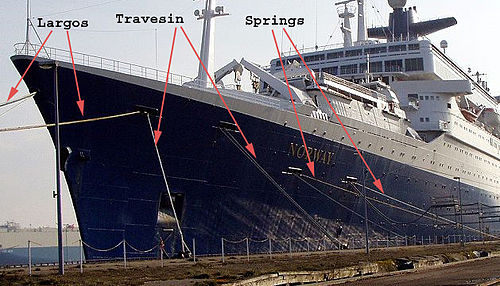The presence of charge gives rise to an electrostatic force: charges exert a force on each other, an effect that was known, though not understood, in antiquity.[23]: 457 A lightweight ball suspended by a fine thread can be charged by touching it with a glass rod that has itself been charged by rubbing with a cloth. If a similar ball is charged by the same glass rod, it is found to repel the first: the charge acts to force the two balls apart. Two balls that are charged with a rubbed amber rod also repel each other. However, if one ball is charged by the glass rod, and the other by an amber rod, the two balls are found to attract each other. These phenomena were investigated in the late eighteenth century by Charles-Augustin de Coulomb, who deduced that charge manifests itself in two opposing forms. This discovery led to the well-known axiom: like-charged objects repel and opposite-charged objects attract.[23]
The force acts on the charged particles themselves, hence charge has a tendency to spread itself as evenly as possible over a conducting surface. The magnitude of the electromagnetic force, whether attractive or repulsive, is given by Coulomb's law, which relates the force to the product of the charges and has an inverse-square relation to the distance between them.[31][32]: 35 The electromagnetic force is very strong, second only in strength to the strong interaction,[33] but unlike that force it operates over all distances.[34] In comparison with the much weaker gravitational force, the electromagnetic force pushing two electrons apart is 1042 times that of the gravitational attraction pulling them together.[35]
Charge originates from certain types of subatomic particles, the most familiar carriers of which are the electron and proton. Electric charge gives rise to and interacts with the electromagnetic force, one of the four fundamental forces of nature. Experiment has shown charge to be a conserved quantity, that is, the net charge within an electrically isolated system will always remain constant regardless of any changes taking place within that system.[36] Within the system, charge may be transferred between bodies, either by direct contact, or by passing along a conducting material, such as a wire.[32]: 2–5 The informal term static electricity refers to the net presence (or 'imbalance') of charge on a body, usually caused when dissimilar materials are rubbed together, transferring charge from one to the other.
The charge on electrons and protons is opposite in sign, hence an amount of charge may be expressed as being either negative or positive. By convention, the charge carried by electrons is deemed negative, and that by protons positive, a custom that originated with the work of Benjamin Franklin.[37] The amount of charge is usually given the symbol Q and expressed in coulombs;[38] each electron carries the same charge of approximately −1.6022×10−19 coulomb. The proton has a charge that is equal and opposite, and thus +1.6022×10−19 coulomb. Charge is possessed not just by matter, but also by antimatter, each antiparticle bearing an equal and opposite charge to its corresponding particle.[39]
Charge can be measured by a number of means, an early instrument being the gold-leaf electroscope, which although still in use for classroom demonstrations, has been superseded by the electronic electrometer








